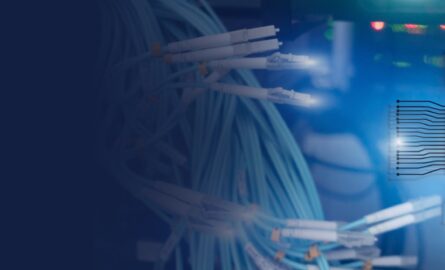The Internet of Things (IoT) is not just a trend, it is becoming a fixture in some industries, providing an extensive toolset to improve speed and agility of business decision-making. Technologically, the IoT is a global system of interconnected devices that deliver data to a central cloud-based service and finally share it with end users. When the IoT is applied to enhance manufacturing and industrial processes, it is called IIoT – the Industrial Internet of Things.
In 2016 IDC [1], the world’s premier provider of market intelligence, and SAP [2], the leading enterprise applications vendor, predicted that in two years 60% of global industrial players would use data recorded from connected devices to analyze processes and identify optimization possibilities [3]. Even though this prediction has been fully borne out and today the IIoT is the most sought-after technology in the manufacturing, oil and gas, agriculture, smart cities and other industries, many businesses are still in a tizzy over how to get started and chose the right IoT platform to make the most of their IoT data.
What is an IoT platform?
In simple words, an IoT platform is an integrated service that provides required software and connectivity components to bring physical objects online. It allows users to automate their environment by handling ongoing management tasks and enabling data visualization.
Unlike other technological markets, primarily offering two dominant platform choices (for instance, Windows and Mac OS in desktop operating systems, iOS and Android in mobile, PlayStation and Xbox in gaming), the IoT market provides literally hundreds of options and it may be years before the winners will be anointed. According to IoT Analytics, a leading provider of market insights for the IoT, M2M, and Industry 4.0, the 2017 list of IoT platform companies contained extensive information on 450 IoT platform vendors [4]. Therefore, not to get lost in this confusing landscape, let us clear up the mess by categorizing this diversity.
Types of IoT Platforms
Without any exaggeration, there are IoT platforms of every shape and size, with completely different capabilities, targeted at various industries and niches. Hence, it is reasonable to start with categorizing them by verticals they can be implemented in:
- Industrial IoT Solutions
– Smart Farming
– Predictive maintenance
– Asset remote tracking
– Energy optimization
– Smart Lightning - Industry-Driven (Verticals)
– Agriculture
– Oil and Gas
– Manufacturing
– Smart Cities - Consumer Electronics
– Wearables
– Home Automation
– Utilities - Hobbyists
– Prototyping
– Development Kits
– DIY Solutions

However, each of the above-mentioned groups of platforms can be applied to build a wide range of IoT solutions and cannot be restricted to a single category. Let us therefore look at them from the angle of functionality:
- End-to-end IoT platforms, covering every stage of IoT adoption without any need for any components (hardware, software, connectivity, security, and device management tools) to be supplied by a third party.
- Connectivity management platforms, offering low power and low cost connectivity management solutions through Wi-Fi and cellular technologies.
- IoT Cloud infrastructures, providing the backend services that enable companies to get rid of the complexity of building their own network stack to monitor device connections.
- Data platforms, offering tools to route device data and manage data analytics.
- Custom platforms, providing a fully integrated services to connect and deploy an IoT device, designed in accordance with needs of a particular company.
- Solution accelerators, providing a set of ready-to-deploy components to create fully customizable solutions for common Internet of Things (IoT) scenarios.
IoT platforms can also be classified by the ownership of code:
- Open source platforms, which original source code is made freely accessible and may be redistributed and modified.
- White label platforms, that are produced by one company and rebranded by other companies to make it appear as if they had developed it.
How not to get lost when choosing an IoT platform
The type of IoT platform fit for a particular organization depends on multiple factors and is often less about technology and more about understanding their own business. If you have a clear vision of what kind of business problem you are going to tackle and what challenges may appear, you will be able to quickly determine the selection of the platform that fits you best. Here is the list of helpful questions to answer when taking a final decision.
- Usage scenarios
What are the use cases for the platform and how your organization is going to interact with the system? This can be data collection and analysis aimed at monitoring and control, process automation enabling prediction of possible malfunctions and downtime, asset management for remote configuration and maintenance etc. - Connectivity options
The right choice of connectivity components is decisive for providing required reliability and efficiency of your solution. Are your devices located within a single building or distributed across the area? What is the telemetry frequency and how often does an end-device poll its parent? Does the connection need to be stable or can be activated upon request? Are there any limitations on power consumption? - Scalability
What is the platform architecture model? Is it scalable by design? Can it be seamlessly extended depending on a number of devices to be connected? What is the maximum number of assets that is supported? - Data storage and retention
What kinds of data need to be stored? How will they be stored? What is your reason for retaining data (business needs, state regulations etc.) as well as required data retention period? - Security / Privacy
How does the platform deal with security and privacy issues? Are there implemented any encryption algorithms to provide secure data transport and storage? - User management
Does the platform provide a flexible role-based user management functionality that can be tailored to reflect your specific administrative structure? How many users can be created in the system? Can they be grouped? What is the process of defining access rights and permissions? - Data access and integration
What do you plan to do with your IoT data? Is it possible to integrate the data acquired through the IoT platform with your ticket management systems and accounting databases? - Customization
Your business is unique, with its own set of rules and characteristics. Is the platform capable of being aligned with your structure, processes, operations, resources and so on? - Pricing
Some platforms use the pay-as-you-go model where you are charged for the resources consumed, while others offer the subscription-based billing with a fixed monthly fee. What pricing model suits you best? - Free trial
Would anybody buy a car without driving one first? It is the same with the IoT platform. You have no way of knowing if it is the right choice for your business until you test it yourself.

Customization vs acceleration: which is smarter?
After having outlined the most commonly applied types of IoT platforms, let us dwell on two of them in more detail.
Many industrial players are not implementing ready-to-use platforms, they are developing their own custom or managed IoT platforms in-house. The benefits of such an approach are obvious: businesses can build tailored solution focused on their needs. It may sound like a dream, but if we dig a little deeper, many pitfalls can be revealed.
According to a Cisco survey, over 60% of respondents admitted that they substantially underestimated the complexities of managing their own IoT initiatives and, what is even more alarming, the same survey also found that 75% of self-initiated IoT projects were considered a failure [5].
What makes these IoT initiatives so complex? Well, first of all, it takes too long and is quite expensive for organizations to bring their products to market. Companies spend months scoping the hardware, software, network, and server requirements to run such a service, which, in turn, can often lead to engagement of new resources and significant expenses. Secondly, even though custom platforms are designed with specific business processes in mind, they are not scalable and flexible enough to be quickly adjusted to ever-evolving market needs.
Another issue is connectivity. According to Intel, 85% of gadgets were not configured to communicate with one another or connect to the internet [6]. This means a managed IoT platform requires middleware to open connections between device sensors and their application layer, which in turn is not only to be integrated, but also continuously maintained.
Considering all of the above, implementation of preconfigured solutions, such as IoT accelerators, can save industrial companies a lot of time and money, providing prompt insights that lead to better informed business decisions. A solution accelerator can serve either as a ready-to-deploy platform that implements common predetermined IoT scenarios, or as a starting point for building custom IoT solutions quickly and affordably, with flexibility and scale in mind.
IoT Platform as a Solution Accelerator
At PLVision, we have completed numerous IoT projects for our customers, which allowed us to identify the common pains of industrial companies when starting their IoT journey. The most important insight we received is that nobody wants to do it from scratch. Therefore, we decided to provide our customers with a jumping-off point by developing an IoT enablement platform to help system integrators and industrial companies cut their time to IoT solutions.
PLVision’s IQoT Platform offers a continuously expanding set of components to speed up the deployment of solutions for the industrial Internet of Things that implement common IoT scenarios such as smart farming, production line tracking, remote asset monitoring, and smart lighting. Designed on the basis of layered architecture, IQoT consists of building blocks, enabling businesses to easily adjust it to their specific needs and scale up to 100 000 connected assets.
Of course, each project is unique with its own specific requirements to security, scalability, and customization. There is no universal tool to solve all your business problems, each option has its own pros and cons. IoT accelerators are not exceptions, but they can definitely make this path easier. To find the perfect environment for building your connected network, we recommend getting professional advice.
Conclusions
Choosing the right IoT platform is a complex endeavor. The market is overwhelmed with hundreds of solutions, leaving industrial businesses confused over how to get started and build an effective IoT strategy. Available platforms for the most part provide merely a set of tools aimed at data collection and visualization, but do not address the core challenge of the Internet of Things – conversion of IoT data into insights and financial value. The only way forward seems to be the development of custom solutions requiring reasonable initial investments, that can be closely tailored to the requirements of particular organizations and capable of evolving with their businesses.
References
- [1] IDC Corporate Website
- [2] SAP Corporate Website
- [3] "10 Big Data Numbers You Probably Didn't Know" by Carole Gunst - May 31, 2017
- [4] "IoT Platforms Company List 2017 Update" by Zaña Diaz Williams - June 17, 2017
- [5] "Connected Futures Cisco Research: IoT Value: Challenges, Breakthroughs, and Best Practices" - May 20, 2017
- [6] "Internet of Things: How Much Does it Cost to Build IoT Solution?" by Andrei Klubnikin - October 21, 2016
- IoT Platforms: Tips for Choosing the Right One - September 27, 2018




